Reviews
Peggy Ahwesh
USA, 1998
Credits
Review by Leo Goldsmith
Posted on 23 October 2009
Source VHS courtesy of EAI
External links
Peggy Ahwesh’s films at Electronic Arts Intermix
Stranded in the Jungle, Ch. 5: Nocturnal, by Steven Shaviro
Categories 31 Days of Horror VI
As a rule - or indeed as some kind of perverse fantasy with its own set of rules - women don’t fare particularly well in horror films. Peggy Ahwesh has repeatedly turned to horror in her films in order to explore and invert, among other things, the genre’s spectacle of the victimization of women and the pleasures the spectator is to derive from it. In her early days in Pittsburgh, where she worked as a film programmer at The Mattress Factory, she served as a production assistant on George Romero’s Creepshow, an opportune occasion not only to ponder the architecture of horror conventions very near the peak of the genre’s contemporary popularity, but also to see how issues of identity politics - of gender and race - might be inserted into the cracks of such constructions.
In turn, Ahwesh’s own horror films dabble in and distort the conventions of their form, often with gender play and reversal both simple (woman as slasher) and complex (revision through parody or the appropriation of found footage). Ahwesh has made at least three horror films in her career, of which her 1998 short Nocturne is her most accomplished. It is also certainly her most conventional horror film, as it not only adopts horror genre motifs with some straightforwardness, but also coheres into an oblique, but discernible narrative. The filmmaker herself is quick to emphasize how simplistic this narrative actually is:
It’s not much of a story. The woman kills the guy and drags him across the lawn, goes to sleep, and there he is, haunting her. She has restless sleep and senses something, some paranormal presence, and then she has to kill him again. That’s it.
Indeed, the content of the film, with what seems a reversal of the usual killer-victim gender assignments, is not complex or even particularly original. It is, in fact, based on an online essay by Steven Shaviro on Mario Bava’s 1963 film The Whip and the Flesh, a film which Ahwesh had not actually seen. But the means by which the filmmaker explores the details of this material is nonetheless revealing: her experimental narrative mode serves to interrogate the interrelated presumptions about women in horror in order to locate alternative genre-pleasures.
As in many of Ahwesh’s films, there is an amateurish quality to Nocturne that threatens to undercut its powers, a sense of home-movie accident and lack of intention that, in its open-ended vagary, seems to suggest darker, more unsettling themes. Her other horror works share in this quality, too, albeit in different ways: her short 1993 horror send-up The Scary Movie (no relation to the Wayans/Zucker franchise) seems like a silly home-movie made by two little girls, even as it strays into disquieting territory with morbid intimations of child sexuality; her 1994 film The Color of Love, made from rain-degraded super-8 porno that Ahwesh found at Bard College, has the dangerous, unauthorized air of a snuff film undercut and (literally) reframed by splotches of vibrant color that recal the handmade films of Stan Brakhage or, more specifically, Carolee Schneemann’s Fuses.
Nocturne was largely shot in grainy black-and-white 16mm, a format that lends the film the look of a zero-budget knock-off of Romero’s Night of the Living Dead, with its jagged naked tree branches against white skies and black powerlines stretching across gray, featureless Pennsylvania fields and roadsides. It’s a desolate landscape familiar from American pastoral horror films, but what familiarity we may have is further destabilized by sequences shot with a consumer-grade Pixelvision camera, which suggest that what we’re watching is a home movie, unauthorized and unmoored from any cinematic tradition.
Thus, rather than simply seeming campy, the lo-fi horror stylings of Ahwesh’s film add to an uncertainty about what we’re seeing, even if (as Ahwesh claims) the plot is not especially convoluted. We watch as the woman lumbers with the naked body of her lover (played by filmmaker and -programmer Bradley Eros) across her lawn, lifting his knees, exposing his genitals, and rolling him into a shallow ditch for burial. But soon the film begins a consistent shifting of perspective and chronology - Pixelvision POV shots, images from the television, seemingly banal events, dreams, hallucinations - and we quickly lose the thread of an overriding narrative, of a dominant authorial voice, of a clear focalization through the lead character.
Pastiche is one of the principal weapons in Ahwesh’s filmmaking arsenal, and Nocturne deepens its spectator’s disorientation through a heterogeneous soundtrack that expressively mixes language and sound effects. Birds and insects chirp, the woman’s shovel crunches into the dirt as she buries her lover’s body, and an electronic crackle creeps in, sounding suspiciously like Iannis Xenakis’ Concret pH, which samples the sound of burning charcoal. The end credits enumerate a number of sources from which the film directly quotes, often through the voiceover of the protagonist: Sheridan LeFanu’s gothic quasi-lesbian vampire novel Carmilla, a notable influence on many books and films (including Stoker’s Dracula and Dreyer’s Vampyr); the Marquis de Sade’s dialogue on carnal pleasure, Philosophy in the Bedroom; readings about the medieval Cathari religious sect and the “strange sexual practices” they used for natural contraception; the writings of Georges Battaille’s love Laure, by way of Kathy Acker’s own pastiche-heavy novel My Mother: Demonology and more online writings by Steven Shaviro; and Walton Green’s The Hellstrom Chronicles, a documentary on insects that mimics the tone of science fiction movies.
“Life must take life in the interest of life itself,” says the stentorian voiceover in Green’s film, as a white, pixilated spider rotates slowly in the middle of the frame. Indeed, Ahwesh employs intertextuality to narrate a filmworld that thrives off death, a place where love and hatred meet. The woman at the film’s center seems confined to, almost imprisoned within, her house, stalking its shadowy, flashlit hallways and stairways backwards and forwards, in search of her dead lover. In her dream-vision, the man whips her, she cowers, they make love. She cuts his throat and caresses his naked, bloody corpse on their bed. Obliquely, words and images construct a tale of obsessive desire, in which “the opposite of love is not hate, but indifference,” in which sadism and masochism thrive off one another. “You seeped into my body like a beautiful toxin… Who knows with what poisons you nourished my blood?”
Nocturne is a psychodrama of co-dependency and guilt, and in many ways this use of pastiche as the film’s structuring element engages in a similar psychic struggle as that of the protagonist. The woman, victimized by her sadistic male lover, must kill and feed off him, must in some way become him. “I secretly always knew that you would escape me in the end, and so I tried to make your betrayal mine.” It is an internalization of the language and imagery of horror as much as it is a reaction to it, and in this way it both murders and is haunted by its influences.
More 31 Days of Horror VI
-

From Beyond
1986 -
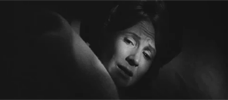
The Haunting
1963 -
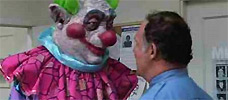
Killer Klowns from Outer Space
1988 -

Shock ‘Em Dead
1991 -

Critters
1986 -

Critters 2
1988 -

The Fall of the House of Usher
1928 -

Jonestown: The Life and Death of Peoples Temple
2006 -

In the Mouth of Madness
1994 -

Winterbeast
1991 -

Black Roses
1988 -

Needful Things
1993 -
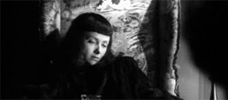
The Seventh Victim
1943 -

A Page of Madness
1926 -
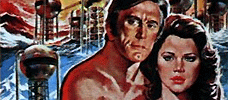
Holocaust 2000
1977 -
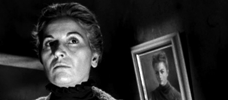
The Man and the Monster
1958 -

The Texas Chainsaw Massacre 2
1986 -

Trick or Treat
1986 -

Single White Female
1992 -
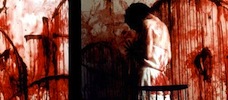
Trouble Every Day
2001 -
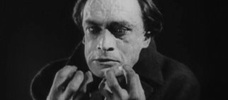
The Hands of Orlac
1924 -

The Devil’s Advocate
1997 -
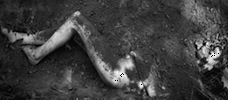
Nocturne
1998 -

Hardware
1990 -

Hard Rock Zombies
1985 -

The Slumber Party Massacre
1982 -

Saw VI
2009 -
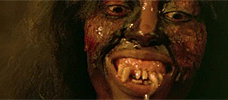
Zombi 4: After Death
1988 -
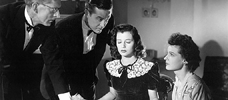
The Uninvited
1944 -

Hausu
1977
We don’t do comments anymore, but you may contact us here or find us on Twitter or Facebook.



